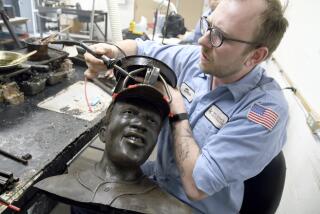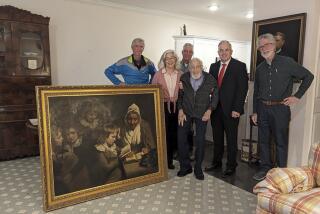How ‘The Duke’ captures the weird truth behind one of the U.K.’s greatest heists
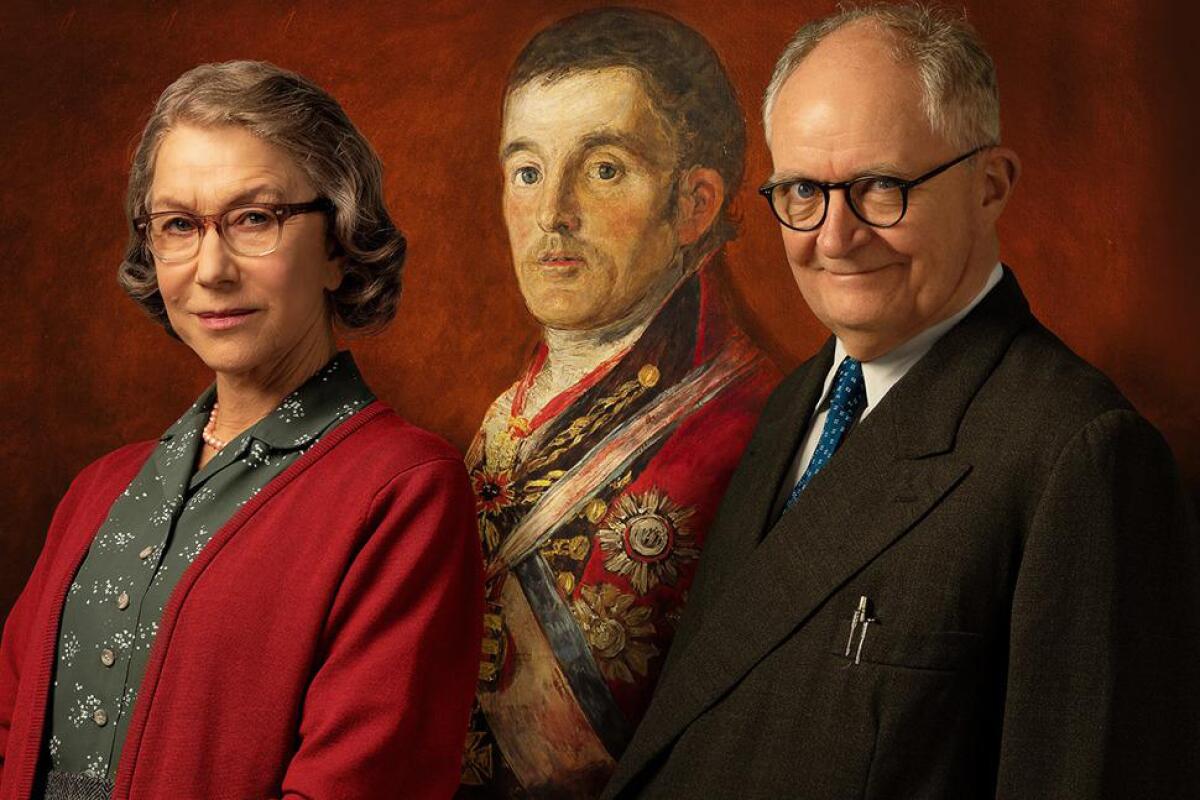
- Share via
London — In 1961, a man snuck into London’s National Gallery and stole Francisco Goya’s painting of the Duke of Wellington.
Kempton Bunton, a retired bus driver from Newcastle, returned the painting several years later and admitted to the theft. At trial, he was found guilty of stealing the painting’s frame, which had been destroyed, and served three months in prison. This true-life heist was so infamous that in 1962’s “Dr. No” the painting appears displayed in Dr. No’s lair, as if the Bond villain himself had removed it from the National Gallery.
Decades later, it emerged that it was actually Kempton’s son, Jackie Bunton, who stole the Goya. The theft and the Bunton family are the subject of a new film, “The Duke,” directed by the late Roger Michell and opening today in U.S. theaters following a successful U.K. run.
The dramatization, which stars Jim Broadbent as Kempton and Helen Mirren as his wife Dorothy, stays remarkably faithful to reality, according to Jackie’s son Christopher Bunton. Bunton, who brought the story to producer Nicky Bentham after trying his hand at an initial screenplay, says that “every scene is based on true events.” For the cast, that’s exactly what made it such a compelling opportunity.

“The fact that it was a real story made it the interesting story it is,” Broadbent says. “Because no one would have bought it if it had just been a fiction. This nutty idea about this strange man who had stolen a picture from the National Gallery is too unlikely to be real, but the fact that it is real made it so interesting.”
“The characters are recognizable, and Kempton Bunton in particular is a wonderful character and a true character,” Mirren adds. “You couldn’t invent that character — it has to come from real life. I think there’s that sense of recognition of human behavior. And that’s when drama is at its very best. ... When we are entertained, but we also recognize ourselves.”
While he never met his grandfather, Christopher Bunton was inspired to pitch a film about him over a decade ago. Following a release of information in 2012, which revealed that Jackie had confessed to the crime years prior but was never prosecuted, Bunton was unhappy with the way Kempton was subsequently portrayed in books and the media. He wanted to set the record straight. But it was also essential to him and the family that “The Duke” not simply be another art heist movie. There needed to be context to why Jackie pulled off the heist.
“I had a vast amount of research, not only from the questions I put to my dad, but my dad actually passed down to me all of my grandad Kempton’s plays and his writings,” Bunton remembers. “And we had an archive of information that the family had kept over the years. It is a historical story, because of the effect that had on the law. All of the information was already there.
“There was obviously information in the public domain about the heist, but the family story was unknown. I felt by shining a light on that it would make people understand it a little bit more, because it is one of the strangest heists of all time. But when you understand the family psyche, it makes you understand it a little bit more.”
The family history
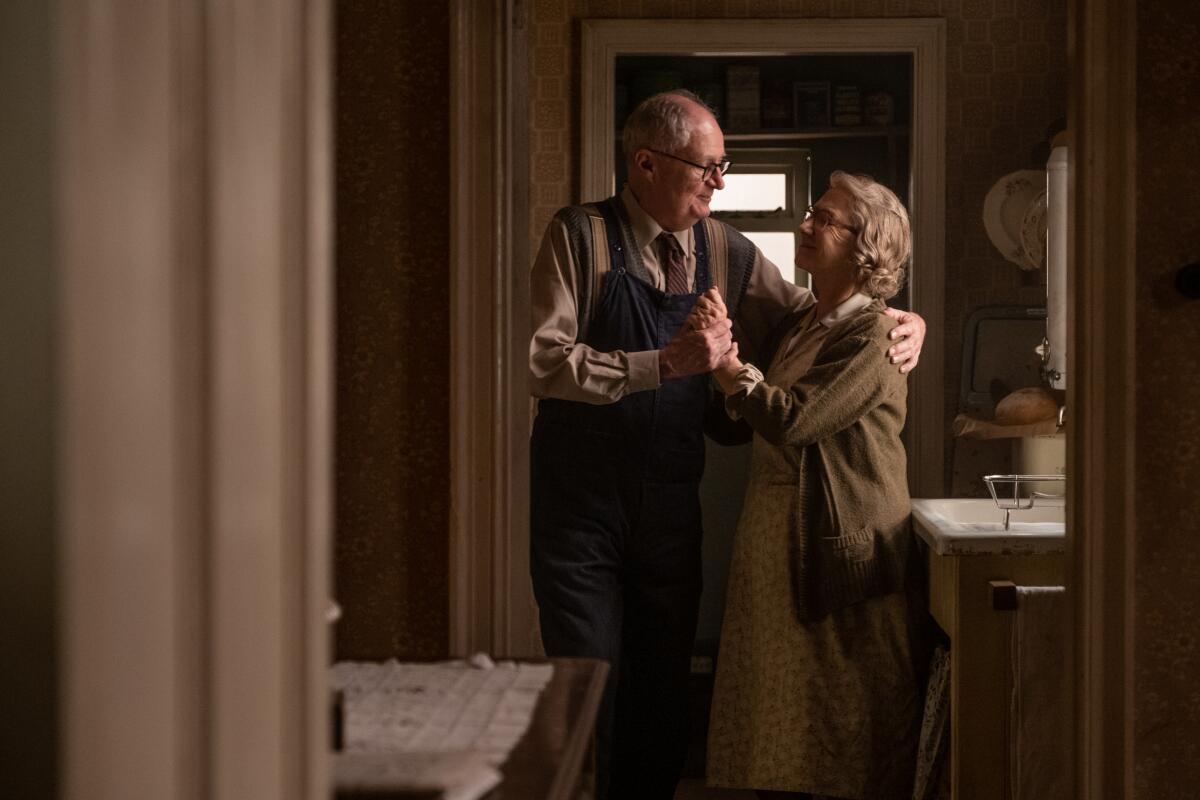
Bentham tapped playwrights Richard Bean and Clive Coleman to write the screenplay with the directive to keep it both historically accurate and emotionally grounded. The pair had access to all of Kempton’s writing and journals — he wrote numerous plays that were never produced — as well as the court records from his trial. In fact, much of the dialogue in the courtroom scenes is a direct transcript from those records.
The filmmakers also had a photograph of Kempton and Dorothy’s late daughter, Marian, which appears in the film. There was some footage of Kempton available, but almost nothing about Dorothy, who is an instrumental character in the story. As portrayed by Mirren, she is one of the most fictionalized aspects of “The Duke.”
“There’s absolutely nothing written down,” Bean says. “There’s one photograph, I think. But the flip side of that, of course, is you’ve got a blank piece of paper and you could make whatever character you want. We made her the kind of person who is socially proud, aspirational, ashamed of family business getting out — that served the plot well.”
“[It] was great in a way because it gave me a clean slate to construct the character upon,” adds Mirren. “I basically took what was in the script and ran with who, in my own imagination, I thought this person was. I found a wonderful photograph of a woman of that era. A very tough working woman in a Northern town in Britain. And she just had the look in her eye. Her hair, her clothes, her walk; everything about her, to me, spoke to the character. So I based my character on that photograph.”
Still, Bunton feels that “The Duke” captures the spirit of his grandmother, whom he calls “the true hero of the family.”
“She was the one who looked after everybody and she kept everyone in check and put food on the table,” Bunton recalls. “She was also mortified by her husband and by his campaigns. I think Helen’s performance is amazing. And a fair representation, as well.”
The easy heist
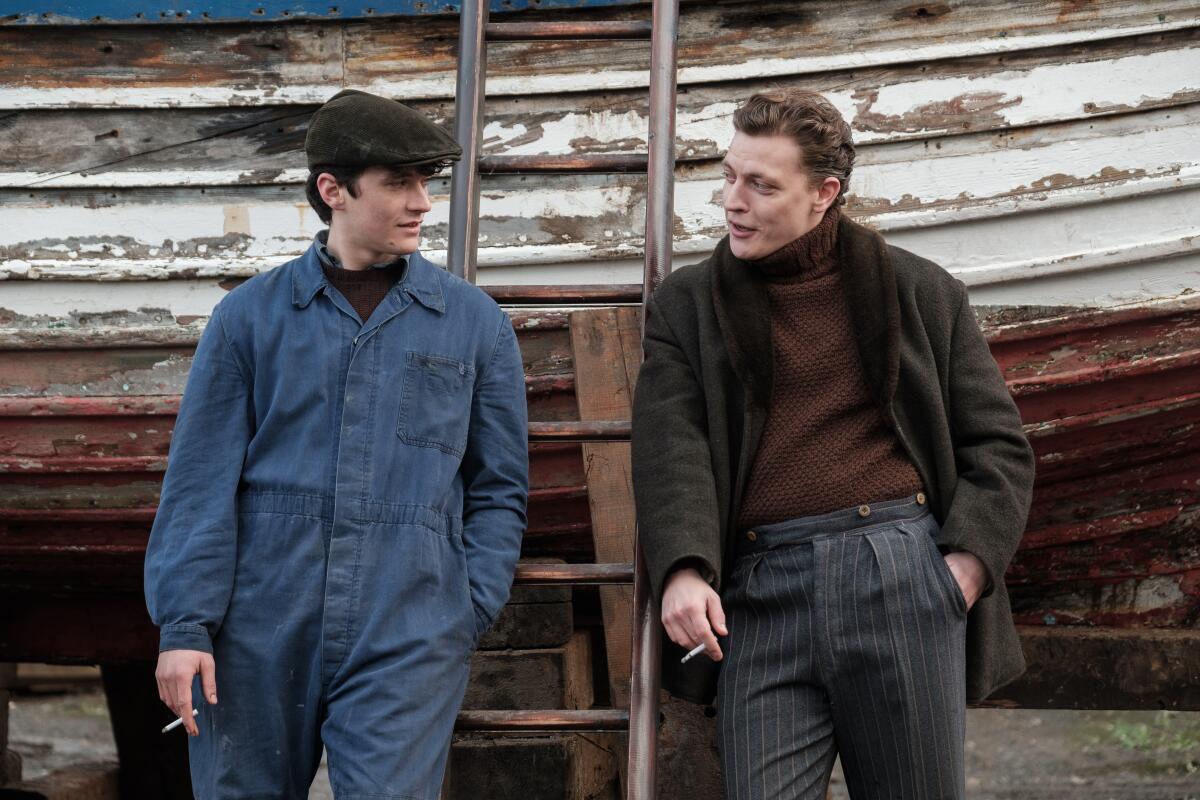
In many ways, the theft is the least exciting part of the story. Jackie, hoping to secure a better life for his impoverished family, went to London with “an idea and 50 pence,” as Bunton describes it. After checking the (very lax) security measures in the gallery, he was able to climb up a ladder, enter through the bathroom window and grab the painting, which he put into a hot-wired car and drove off. He was stopped by a police officer for driving the wrong way, and, even with the painting in full view, let go.
“My dad says that he never expected to go through with it,” Bunton recounts. “And he just said, every step of the way, it was almost like God was helping him, encouraging him to do it, because everything fell into place. And he said he was prepared to have walked away. If anything went wrong, he would have just walked away from it and not done it. But everything just fell into place.”
He adds of the heist, “It was more complicated than you see in the film, to be honest, but it shouldn’t have been that easy. The film touches on that by making it seem even more straightforward than it was.”
Once Jackie realized what he’d done, he called his father, who took over. For several years, Kempton kept the Goya hidden behind a bedroom cupboard, removing and disposing of its frame. He had long campaigned for retirees to receive free TV licenses — an annual payment is required in the U.K. to watch the BBC — and holding the painting for ransom seemed like an opportunity to raise money.
In a series of notes written to the press, Kempton demanded £140,000 be given to charity in return for the painting. Initially, Scotland Yard refused to take the notes seriously, assuming the theft was the work of an organized crime group. Finally, worried that his son Kenny’s girlfriend was planning to turn him in, Kempton returned the painting by leaving it at the Birmingham train station’s luggage storage office and mailing the ticket to the Daily Mirror.
After he didn’t get the promised reward, Kempton turned himself in by walking into Scotland Yard and offering a written statement. He went on trial for theft of the painting and its frame and a well-known lawyer, Jeremy Hutchinson, played in the film by Matthew Goode, offered to represent him.
The legal ramifications
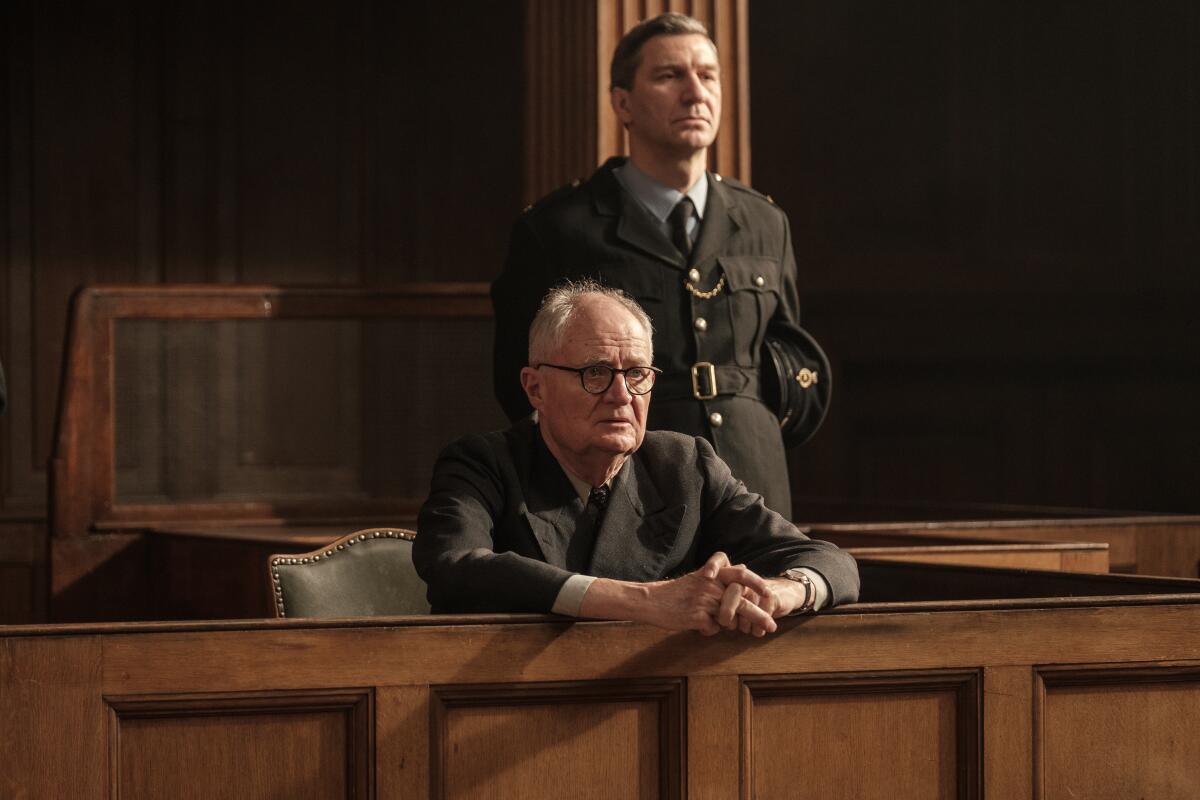
The trial took place four years after the Goya was stolen — the film condenses the timeline — and Kempton was found guilty of stealing the frame but not the Goya, due to a loophole in the law.
“The offense of theft is committed when a person appropriates property belonging to another with the intention of permanently depriving the other person of it,” Coleman explains. “That’s the legal definition. And Jeremy Hutchinson was able to run this utterly ridiculous but rather brilliant defense that [Kempton] effectively borrowed it to raise money for charity.
“What isn’t in the film [was] that the government were forced to change the law of theft. As a result of this case, they introduced an offense into the Theft Act in 1968 of taking an object from public display. Because otherwise, as the judge said in his summing up, anyone could go and borrow Rubens for the weekend to impress their local Rotary Club. So legally it’s a very, very significant case because it led to a significant change in the rule of theft.”
Kempton’s decades-old story still resonates today, and Broadbent and Mirren attribute some of the film’s popularity in the U.K. to the fact that he reflects a collective desire to stick it to the government.
“The myth of David and Goliath is an eternal myth and one that we all identify with,” Mirren says. “The man standing in front of the tank in Tiananmen Square or [Volodymyr] Zelensky right now in the Ukraine. That man or woman who stands up against a power. I think we all feel like that in a way — we all feel that we’re a small person fighting against forces that we can’t control.”
Jim Broadbent and Helen Mirren star in director Roger Michell’s last film, a fact-based tale set in the 1960s about a British retiree who allegedly stole a famous painting from a museum.
More to Read
Only good movies
Get the Indie Focus newsletter, Mark Olsen's weekly guide to the world of cinema.
You may occasionally receive promotional content from the Los Angeles Times.

